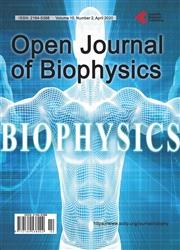Quantum States in Templated Biological Processes
引用次数: 0
Abstract
Living matter is characterized by its variegated potential energy landscape possessing a proneness to continually absorb externally supplied energy. This enables it to ascend from its momentary energy minimum state to one of its myriad barriers only to subsequently descend to a new minimum with a potentiality to perform new functions or processes, in the while exuding energy (mainly in the form of heat). As in studies of molecular intersystem crossing, the jumping processes are describable in terms of quantum states. In this work we derive the low energy quantum states for those three templated self-assembling processes, self-replication, metabolism and self-repair that are commonly regarded as distinguishing animate from inanimate substance. The outcome of each process is a new, long-living, stable molecular aggregate characterized by its specific conformation, comprising a host of micro-states associated with sub-conformations and patterned upon the template. The provenance of these newly-formed states is obtained here by a unified formalism for all three processes, based on a Hamiltonian, constructed in an abstract Hilbert-space framework, whose essences are bilinear coupling terms in the Hamiltonian between the template and the bath, as well as between the reactants and the bath. Treating these terms by second order perturbation, one finds in low lying quantum states an alignment between the template and the product, somewhat analogous to the Kramers-Anderson superexchange mechanism, with the bath replacing the bridging anion and by exploitation of the decohering due to the randomness of the bath. The idea underlying this work, recurrent in the biological literature and here expressed in a Physics, Hamiltonian framework, is the correlative unity of the whole biological system comprising multiple organs.模板化生物过程中的量子态
有生命的物质具有不断吸收外界供给的能量的倾向,其特点是势能格局的多样性。这使它能够从瞬时能量最小状态上升到无数障碍之一,然后下降到具有执行新功能或过程的新最小值,同时释放能量(主要以热的形式)。在分子系统间交叉的研究中,跳跃过程可以用量子态来描述。在这项工作中,我们推导了三种模板自组装过程的低能量量子态,自我复制,代谢和自我修复通常被认为是区分有生命和无生命的物质。每个过程的结果都是一个新的、长寿命的、稳定的分子聚集体,其特征是其特定的构象,包括与亚构象相关的许多微观状态,并在模板上形成图案。这些新形成的状态的来源是通过统一的三个过程的形式得到的,基于一个抽象的希尔伯特空间框架中构造的哈密顿量,其本质是模板和槽之间以及反应物和槽之间的哈密顿量中的双线性耦合项。通过二阶扰动处理这些项,人们发现在低洼量子态中模板和产物之间有一种排列,有点类似于Kramers-Anderson超交换机制,其中槽取代了桥接阴离子,并利用了由于槽的随机性而产生的退相干。这项工作背后的思想,在生物学文献中反复出现,在这里用物理学的哈密顿框架来表达,是由多个器官组成的整个生物系统的相关统一性。
本文章由计算机程序翻译,如有差异,请以英文原文为准。
求助全文
约1分钟内获得全文
求助全文

 求助内容:
求助内容: 应助结果提醒方式:
应助结果提醒方式:


